Space
Mankind’s return to the moon
Published
10 months agoon
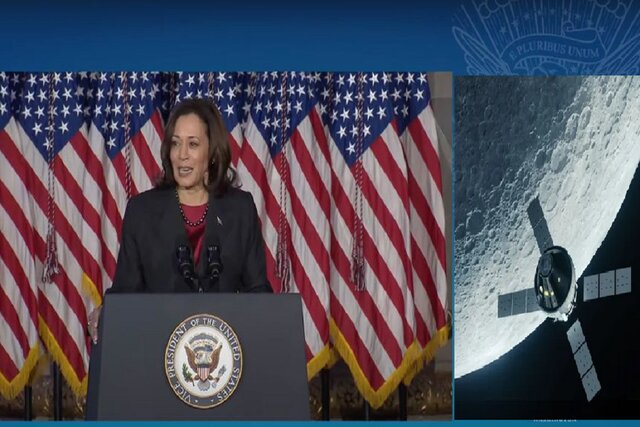

Mankind’s return to the moon
According to Space, the Vice President of the United States Kamala Harris reiterated on December 20 that NASA’s mission to return humans to the moon is an international matter.
Although it is not yet clear which country this astronaut will represent.
At the third meeting of the National Space Council (NSC), which he chaired, Harris pledged that NASA’s Artemis program would send a non-American man to the surface of the moon in the relatively near future.
He said: We plan to send an international astronaut to the surface of the moon by the end of the decade. He did not provide further details, including which country the astronaut will represent.
The goal of the Artemis program is to establish a permanent and stable human presence on the lunar surface by the end of the decade. NASA officials have said that the skills and knowledge gained through this effort will help humans fly to Mars in the 2030s or 2040s.
To achieve Artemis’s bold goals, NASA is drawing on a variety of partnerships, both commercial and international. For example, the European Space Agency (ESA) provides the service module for the US-made Orion capsule that will send Artemis astronauts into lunar orbit. Also, this agency the Japan Aerospace Exploration Agency (JAXA) and the Canadian Space Agency (CSA) are all significantly involved in Gateway, which is a small space station that NASA plans to build in lunar orbit in the next few years.
Read More: Discovery of life-hosting agent on Saturn’s moon
One of Artemis’s missions has already been completed. The Artemis 1 mission launched and returned an unmanned Orion capsule late last year. Artemis 2 is supposed to send four astronauts, three NASA astronauts, and Jeremy Hansen from the Canadian Space Agency, into lunar orbit in late 2024 or 2025.
Then the landing missions will begin. Artemis 3, which will land astronauts near the moon’s south pole, is targeted for 2025 or 2026. After that, Artemis 4 and Artemis 5 will be placed, which can be launched in 2028 and 2029, respectively.
Josef Aschbacher, director of the European Space Agency, said in July that both Artemis 4 and Artemis 5 will carry a European astronaut. Therefore, Harris’s comments at the December 20 meeting of the National Security Council held at the Mellon Auditorium in Washington, DC, are not breaking news.
However, he reaffirmed that Artemis would be different from Apollo, where the United States traveled to the moon alone. In fact, Harris emphasized that 33 countries have now signed the US-led Artemis Agreement, which provides a framework for responsible lunar exploration.
Harris said: This announcement and this meeting of our National Space Council demonstrates our belief in the critical importance of international cooperation.
Artemis was not the only topic discussed at a recent meeting of the National Security Council, a policymaking body made up of dozens of high-ranking US officials, including the NASA administrator, the director of national intelligence, and the secretaries of defense, commerce, transportation, and homeland security. For example, several attendees emphasized the importance of national space security.
Chris Grady, Vice Chairman of the Joint Chiefs of Staff, said: “In my view, space has emerged as our most essential warfighting domain and inseparable from national security.”
The recent National Security Council meeting was held on the fourth anniversary of the founding of the US Space Force, something Harris and Grady both mentioned.


You may like
-

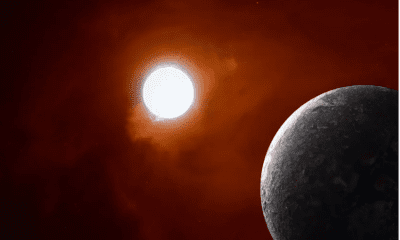


Maybe the Earth is not doomed by the death of the sun
-




Alien life may be hiding under the Martian ice cover
-

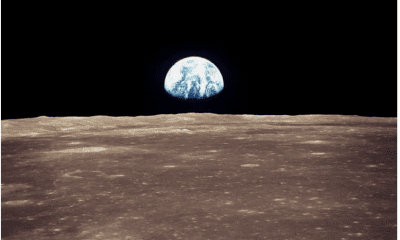


Why is it still difficult to land on the moon?
-

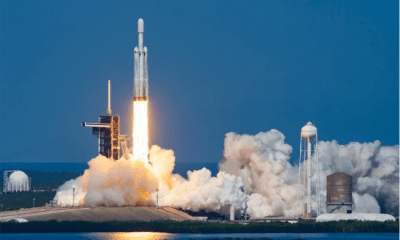


Europa Clipper, NASA’s flagship probe was launched
-




Dark matter and ordinary matter can interact without gravity!
-




James Webb Space Telescope deepens cosmology’s biggest controversy


Maybe the Earth is not doomed by the death of the sun
Will the sun one day destroy the earth? This may or may not happen. Astronomers have spotted a rocky planet the size of Earth orbiting a white dwarf, hinting at a future in which our planet outlives its star.
In 6 billion years, the sun will grow and become a red giant star. At this point, Mercury and perhaps Venus will be swallowed up, and for a long time, we thought that planet Earth would also be incinerated. But maybe the blue planet is not doomed, even though it may become an uninhabitable world in the next 6 billion years.
According to the New York Times, scientists have discovered a rocky planet orbiting a star that has passed its red giant phase. The planet now orbits a white dwarf, a smaller stellar body left over after a star burns out.
Importantly, the planet appears to have once been in the same position as the Earth now orbits our Sun. Before being swallowed up by its dying star, the rocky planet was pushed into a distant orbit, twice the distance between Earth and the Sun. In this way, the discovered world is considered the first rocky planet that has been seen rotating around a white dwarf.
A rocky Earth-like planet has survived the destruction of its star
“We don’t know if Earth can survive,” said astrophysicist Kaming Zhang of the University of California, San Diego, who led the study published in the journal Nature Astronomy. “If it survives, it will become such a system.”
The rocky planet is about 4,000 light-years away and in 2020, the South Korean Radio Astronomy Observatory discovered it using a process called gravitational microconvergence. The Korean team observed the star of the rocky planet while passing in front of a distant star, and that star magnified the amount of light reaching the telescope by a thousand times. This effect, known as convergence or gravitational lensing, makes it possible to identify very distant and faint objects.
That particular event was a one-off event, and the chances of further detailed observations are limited until powerful new telescopes can get a better look at the rocky planet in the future. But Dr. Zhang and his team were able to do more last year at the Keck Observatory in Hawaii and found out that the planet’s star is actually a white dwarf.
The researchers calculated that at least two objects are orbiting the white dwarf. One of them was a brown dwarf; That is, the failed star that had never ignited by nuclear fusion and was located at a great distance from the central star. But the other object is a planet with a mass of about 1.9 times that of Earth, which orbits closer to the star’s period and is therefore likely to be a rocky world.
By modeling the evolution of the star system, Zhang’s team calculated that the planet may have once been in a habitable orbit like Earth. The star was probably the same size as ours. “We expect the star to have been roughly the same mass as the Sun,” Dr. Zhang said.
 Gravitational convergence shows the white dwarf shown by the vertical white lines. The researchers captured images of the star years before the event (a), shortly after the background star peaked in 2020 (b), and after it disappeared in 2023 (c).
Gravitational convergence shows the white dwarf shown by the vertical white lines. The researchers captured images of the star years before the event (a), shortly after the background star peaked in 2020 (b), and after it disappeared in 2023 (c).
But as the star ran out of fuel, it lost some of its mass, causing the rocky planet’s orbit to lengthen. The rocky planet escaped from the expanding red giant phase of the star and survived to the white dwarf stage.
A handful of gas planets have been found orbiting white dwarfs, but they were either in more distant orbits or had migrated inward and closer after the red giant phase. “If Dr. Zhang’s diagnosis is correct, this would be the first rocky planet orbiting such a star,” said Susan Mulally, an astronomer at the Space Telescope Science Institute in Maryland. “It’s definitely the smallest and clearest rocky planet we’ve ever found around a white dwarf.”
A handful of gas planets have been discovered orbiting white dwarfs
Stephen Kane, an astronomer at the University of California Riverside, noted that he was excited when he first read the paper. He has previously investigated whether planets can survive when their stars pass through the red giant phase, so he is intrigued by the new discovery. However, the presence of the brown dwarf complicates everything. If the brown dwarf was once closer to the star but moved outward, it could change the dynamics of the entire system, he explained. That means, maybe there are other planets that have been thrown out and the planets that are currently observed are among the survivors.
NASA is scheduled to launch the Nancy Grace Roman Space Telescope before 2027 and is expected to find more planets through gravitational microconvergence. Perhaps some of them are orbiting white dwarfs.


Alien life may be hiding under the Martian ice cover
A new study suggests that the conditions necessary for photosynthesis on Mars may exist beneath the dusty ice cover in the Red Planet’s mid-latitudes.
Photosynthesis is a process by which living organisms such as plants, algae, and cyanobacteria can produce chemical energy. This process requires water and light to progress and produces much of the oxygen in the Earth’s atmosphere. According to the new findings, Martian ice layers of sufficient thickness can filter out intense solar radiation while still allowing sunlight to penetrate beneath them for photosynthesis, creating so-called “radiatively habitable” zones.
Since the process of photosynthesis is suitable for light, the new results should be considered in sufficient light conditions. While the findings don’t prove that life exists on Mars, or even existed in the distant past, they can give scientists ideas to search for. Aditya Kholler, a postdoctoral researcher and research supervisor at NASA’s Jet Propulsion Laboratory, says the Martian dusty ice in the mid-latitudes is exposed to sunlight and could be an accessible environment to search for life on Mars today.
 Images of the Red Planet from NASA’s Mars Exploration Orbiter (MRO).
Images of the Red Planet from NASA’s Mars Exploration Orbiter (MRO).
Earth vs. Mars
Both Earth and Mars are located in a range known as the Sun’s life belt; A region around a star where the temperature is favorable for the flow of surface liquid water. Although 71% of Earth’s surface is covered by liquid water oceans, Mars has a mostly dry landscape.
Discoveries of Mars rovers such as Curiosity and Perseverance have shown that conditions on Mars are different. Surface features such as dry lake beds and river forks discovered by these robots indicate the presence of surface liquid water billions of years ago. Additionally, Mars missions such as the Mars Reconnaissance Orbiter (MRO) have often discovered water ice in unexpected areas.
According to scientists, Mars lost its liquid water billions of years ago; Just as the planet’s magnetic field weakened (Earth’s magnetism is still very strong) and much of its atmosphere was lost. Thus, there were few barriers to surface water evaporation. The absence of a thick atmosphere also means that today’s Mars is under the bombardment of harmful ultraviolet radiation from the sun, which is fatal for living organisms and can destroy the complex molecules needed for life.
 NASA’s Discovery Orbiter image of craters in the Cyrene region of Mars.
NASA’s Discovery Orbiter image of craters in the Cyrene region of Mars.
Unlike Earth, Mars does not have an ozone protective shield; As a result, the level of surface ultraviolet radiation is 30% higher than that of the earth; Therefore, photosynthesis on Mars probably occurs in places that are inside the dusty ice; Because the dusty ice cover can block harmful UV rays on the surface of Mars, and liquid water is highly unstable due to the planet’s dry atmosphere.
Using computer simulations, the researchers found that Martian dusty ice may melt from the inside and that the overlying ice cover prevents shallow subsurface liquid water from evaporating in the dry Martian air. According to Kholer:
Thus, two key elements for photosynthesis could be present in mid-latitude Martian dust ices. Photosynthesis requires sufficient amounts of sunlight as well as liquid water. Two previous independent simulations of dense Martian snow show that if small amounts of dust (less than one percent) are present in the snow, subsurface melting could occur in the mid-latitudes of present-day Mars.
“With the discovery of dusty ice that was exposed a few years ago within snow masses in Martian glaciers, there is a mechanism for subsurface melting that could underlie the formation of shallow subsurface liquid water,” Kholer added. According to Kholer, the dusty ice on the ice cap can block UV radiation from the surface of Mars and also allow sunlight to penetrate below the surface for photosynthesis.
 An image from NASA’s Discovery Orbiter of a puddle in the Dao Wallis region of Mars.
An image from NASA’s Discovery Orbiter of a puddle in the Dao Wallis region of Mars.
The depth required for the formation of radiative habitable zones depends on the amount of dust in the ice. Very dusty ice can block a lot of sunlight, the researchers’ simulations show. However, ice with 0.01 to 0.1 percent dust allows for the formation of a radiative zone between 5 and 38 cm deep. Less contaminated ice allows for a deeper and wider radiation zone at a depth between 2.2 and 3.1 meters.
According to researchers, the polar regions that have the most ice on Mars are too cold for habitable radiation zones; Because they do not have the subsurface melting mechanism. Such a mechanism probably occurs in the middle latitudes of the Red Planet.
Scientists have taken scientific support for their theory from evidence on planet Earth. Kholer says:
I was surprised to learn that similar areas for life exist within dusty and sedimentary polar ice. These areas are called cryoconite cavities and are formed when dust and sediment on the ice melts into it because it is darker than the ice.
 Evidence from Earth: Cryoconite-formed cavities on the Matanuska Glacier, Alaska, 2012
Evidence from Earth: Cryoconite-formed cavities on the Matanuska Glacier, Alaska, 2012
Every summer, due to heating by sunlight, liquid water gathers around the dark dust inside the ice. This happens because the ice is semi-transparent, allowing sunlight to penetrate below its surface. According to Khüler, the researchers discovered that the tiny organisms that live in these shallow subsurface habitats on Earth usually go dormant in the winter, when there isn’t enough light to form liquid water in the dusty ice.
Of course, none of the above findings mean that photosynthetic life exists on Mars or probably ever existed; But it could inspire further research into the possibility of radiation habitats on the Red Planet. Kholer adds:
I am working with a group of scientists on improved simulations of where and when the ice melts on present-day Mars. Additionally, we are recreating these dusty ice scenarios in the lab to investigate them in more detail.
The results of the research were published on October 17 in the journal Communications Earth & Environment.


Why is it still difficult to land on the moon?
This year, the private company Spacel and the Indian Space Organization both met tragic ends when they tried to land their spacecraft on the surface of the moon. Despite the astonishing leaps made in recent decades in computing, artificial intelligence and other technologies, it seems that landing on the moon should be easier now; But recent setbacks show that we still have a long way to go with safe and trouble-free landings on the surface of Earth’s only moon.
50 years after sending the first man to the surface of the moon, the question arises as to why safely landing a spacecraft on Earth’s nearest cosmic neighbor is still a difficult task for space agencies and private space companies. Stay with Zoomit to check the answer to this question.
Why is the lunar landing associated with 15 minutes of fear?
Despite the complexities of any space mission, sending an object from Earth into orbit around the moon today is easy. Christopher Riley, the director of the documentary film In the Shadow of the Moon produced in 2007 and the author of the book Where We Stood (2019), both of which are about the history of the Apollo 11 mission, explained the reasons for the difficulty of landing on the moon in an interview with Digital Trends. is According to him: “Today, the paths between the Earth and the Moon are well known, and it is easy to predict them and fly inside them.”
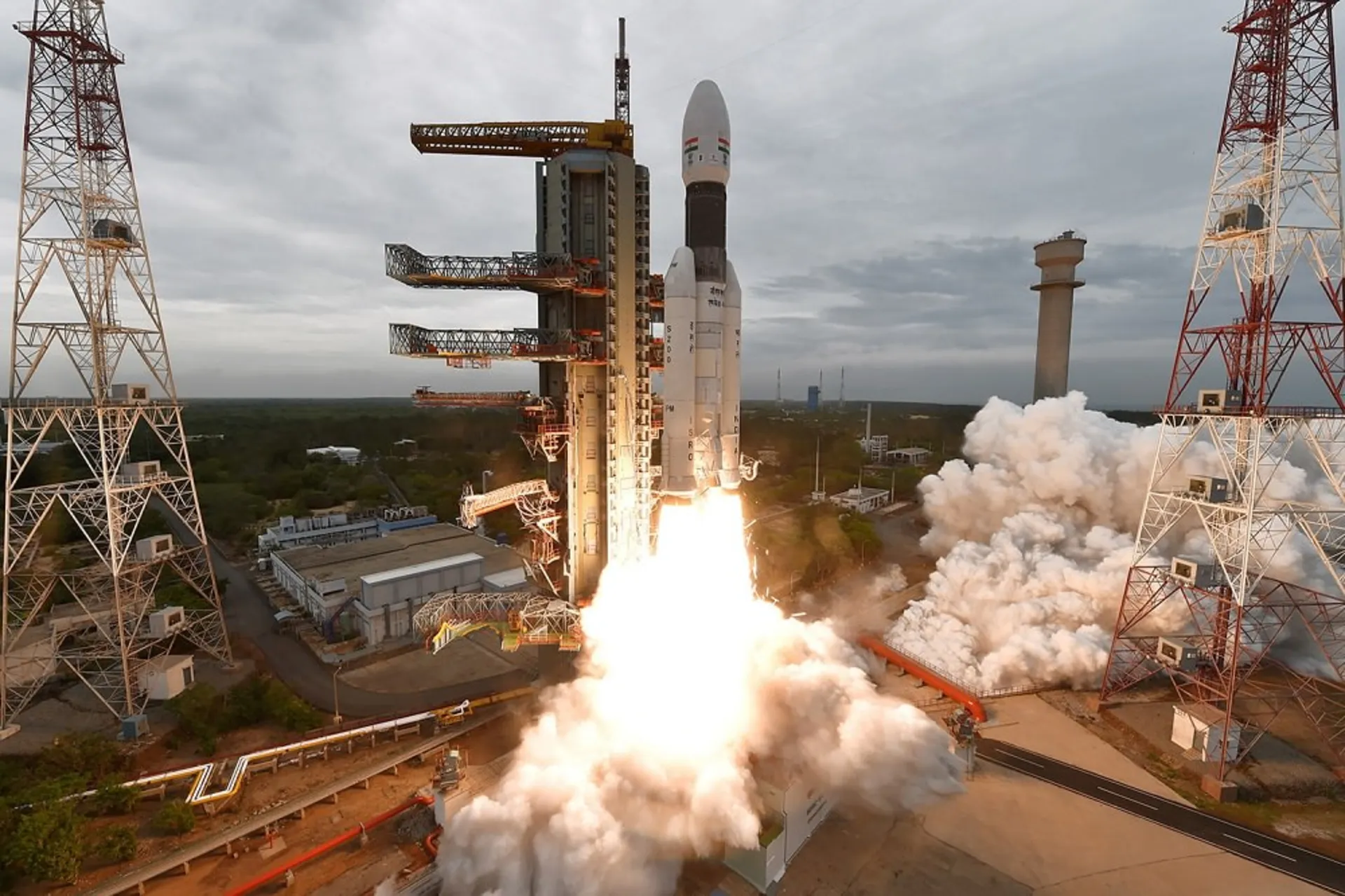
Chandrayaan 2 mission launch
However, the real challenge is getting the spacecraft out of orbit and landing it on the lunar surface; Because there is a delay in the communication between the Earth and the Moon, and the people in the control room who are present on the Earth cannot manually control the spacecraft in order to land it safely on the Moon. As a result, the spacecraft must descend automatically, and to do so, it will fire its descent engines to slow its speed from thousands of kilometers per hour to about one meter per second, in order to make a safe landing on the lunar surface.
For this reason, the director of the Indian Space Research Organization (ISRO), who was trying to land the Vikram lander last month, described the final descent of the spacecraft as “frightening 15 minutes”; Because as soon as the spacecraft enters the landing stage, the control of its status is out of the hands of the mission control members. They can only watch the spacecraft land and hope that everything goes according to plan, that hundreds of commands are executed correctly, and that the automatic landing systems gently bring the spacecraft closer to the surface of the moon.
The Great Unknown: The Landing Surface
One of the biggest challenges in the final descent phase is identifying the type of landing site. Despite the availability of instruments such as the Lunar Reconnaissance Orbiter (LRO) that can capture amazing views of the lunar surface, it is still difficult to know what kind of surface the spacecraft will encounter when it lands on the moon.
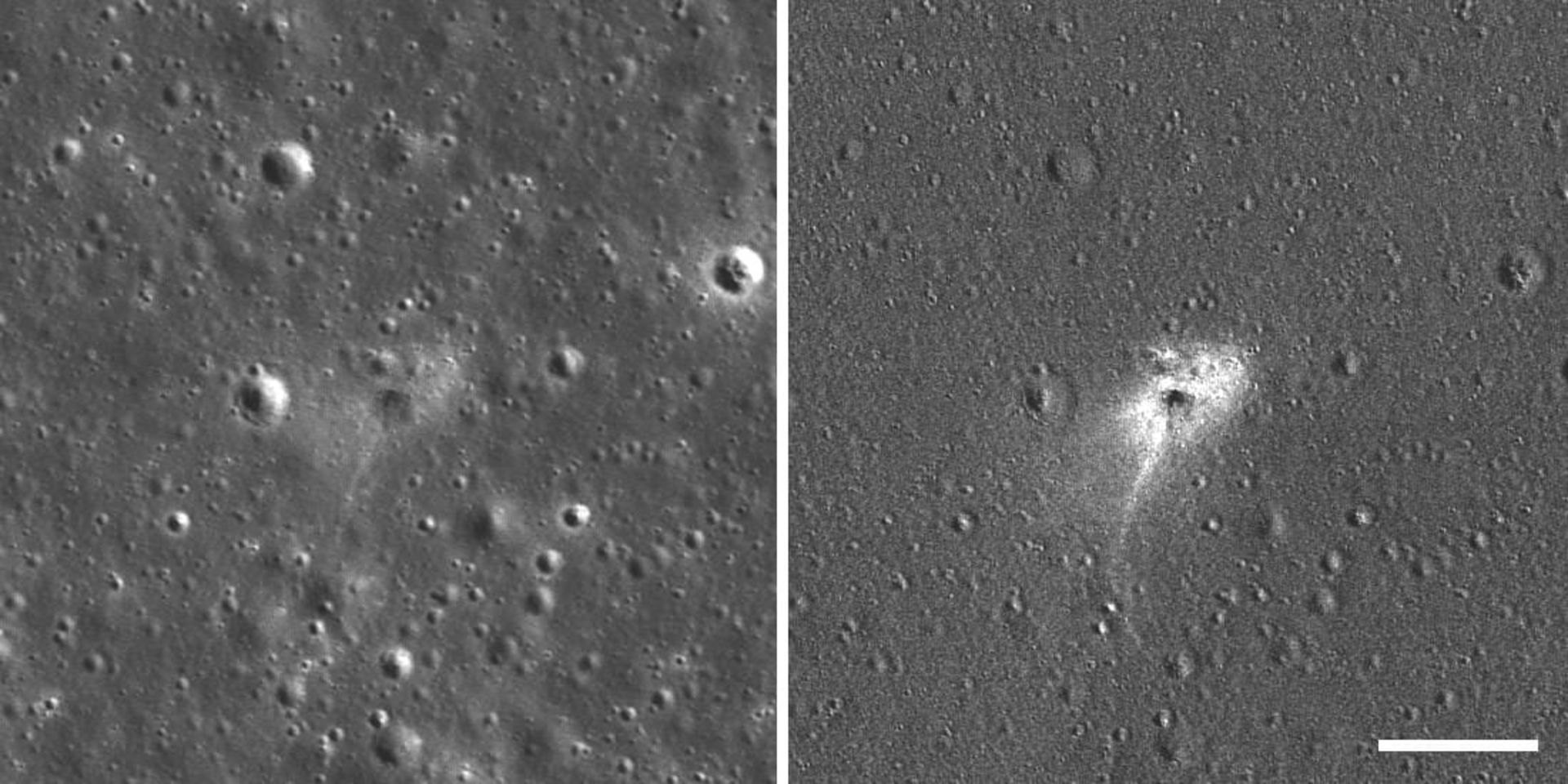
Left: Breshit crash site. Right: The ratio of the before and after images highlights the occurrence of minor changes in surface brightness.
Leonard David, author of Moon Fever: The New Space Race (2019) and veteran space reporter, says:
The Lunar Reconnaissance Orbiter is a very valuable asset that has performed really well over the years; But when you get a few meters above the surface of the moon, complications appear that cannot be seen even with the very powerful LRO camera.
Even today, despite the imaging data available, “some landing sites still have unknown remains,” Riley says. He notes that the Apollo 11 mission included an advantage that today’s unmanned landers lack, which is the presence of an astronaut’s observer’s eyes that can closely observe the surface of the spacecraft’s landing site. As you probably know, in the mission that led to the landing of the first man on the surface of the moon, the Eagle computer was guiding the spacecraft to a place full of boulders; But to avoid hitting the rocky surface of the moon, Armstrong took control of the spacecraft himself and landed it on a flat surface.
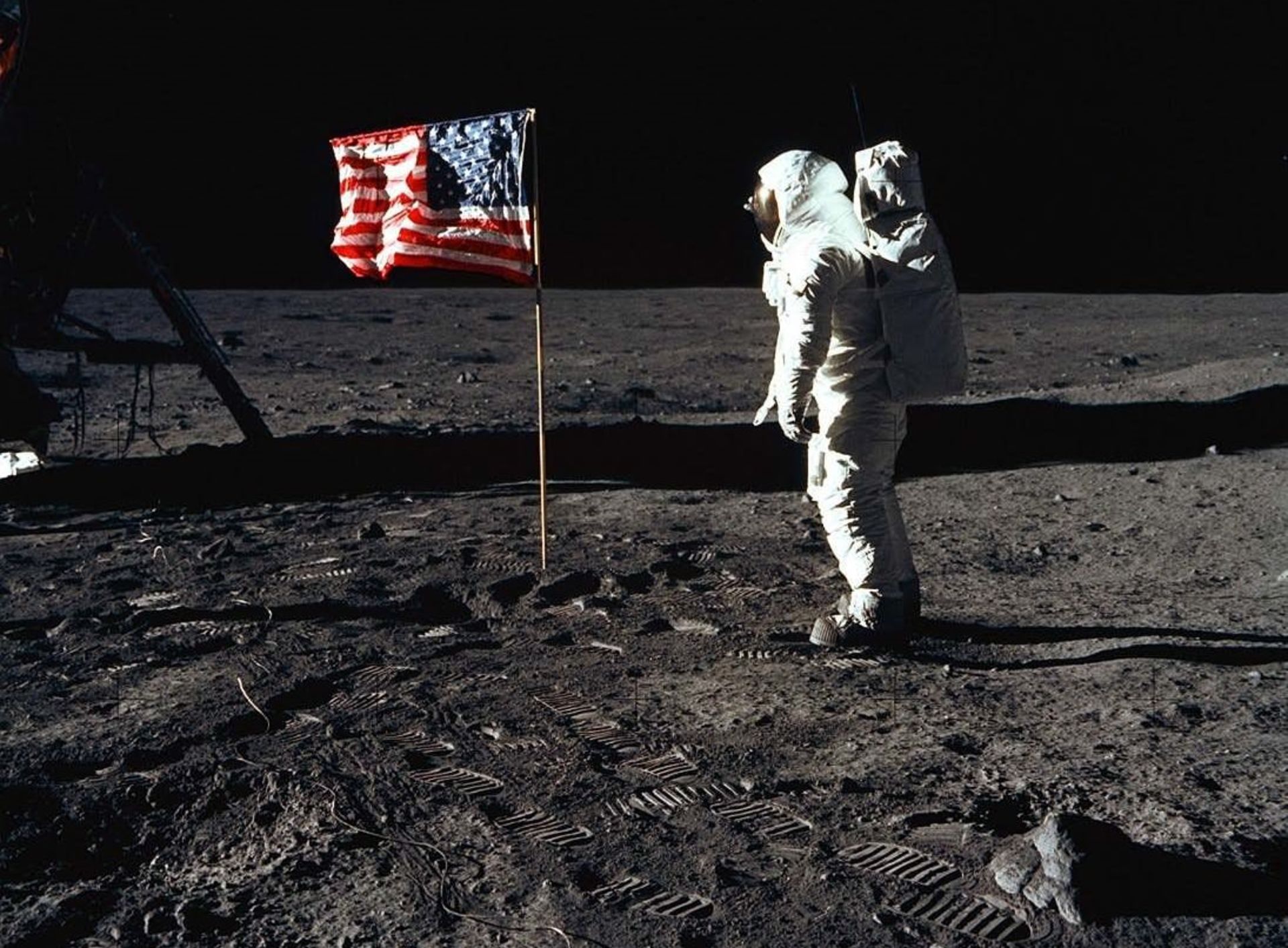
The uneven surface of the landing site had caused many problems in previous lunar missions such as Apollo 15. In this mission, the astronauts were told that as soon as the spacecraft touched the surface of the moon, they should turn off the engines to prevent dust from being sucked in and the risk of a return explosion. But the Apollo 15 spacecraft landed in a crater, and because of this, one of its legs came into contact with the surface earlier than the others. When the crew shut down the engines, the spacecraft, moving at a speed of 1.2 meters per second, experienced a hard landing. The lander landed at an oblique angle, and although it eventually landed safely, it nearly overturned, causing a fatal disaster.
- Half a century after Apollo 11; How did the great human leap happen?
- dust storms; The nightmare of space missions to the moon
The difficult landing of Apollo 15 introduced another complicating factor in lunar landings: lunar dust. The Earth’s moon is covered with dust that is thrown into the air by any movement and sticks to everything it comes in contact with. As the spacecraft approaches the surface of the moon, huge plumes of dust are kicked up that limit the field of view and endanger the spacecraft’s electronics and other systems. We still do not have a solution to deal with the dust problem.
An achievement that has been achieved before
Another reason why the moon landing remains a challenge is that gaining public support for lunar projects seems difficult. Referring to Neil Armstrong and Buzz Aldrin, the two astronauts who walked on the moon during the Apollo 11 mission, David says, “We convinced ourselves that we had sent Neil and Buzz [to the surface of the moon]; “As a result, when it comes to lunar missions, people may say we’ve been there before and we’ve had this success.”
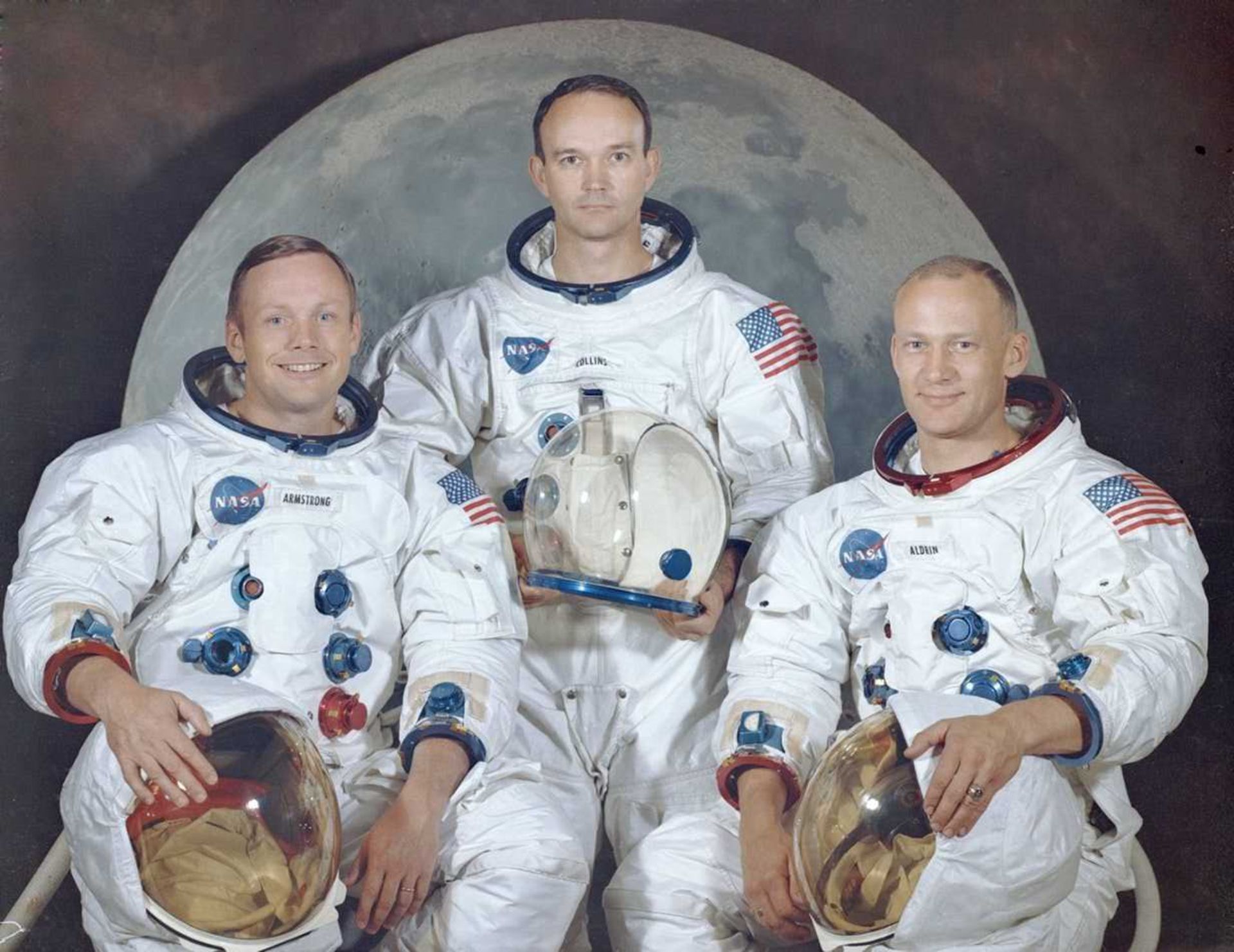
But in reality, our understanding of the moon is still very little, especially in relation to long-term missions. Now, with a 50-year gap between the Apollo missions and NASA’s upcoming Artemis project, the knowledge gained has been lost as engineers and specialists retire. David says:
We need to recover our ability to travel into deep space. We haven’t gone beyond near-Earth orbit since Apollo 17 and since 1972. NASA is no longer the same organization that put men on the moon, and there is a whole new generation of mission operators.
The importance of redundancy
As the first private spacecraft entered into orbit around the moon, the Space project was of considerable importance; But its failure to land smoothly on the surface of the moon made the achievement of landing on the surface of the moon still remain in the hands of governments. However, we can expect more private companies, such as Jeff Bezos ‘ Blue Origin, which is developing its lunar lander, to target the moon in the future. According to Elon Musk, even the giant SpaceX Starship spacecraft, which is being built with the ultimate goal of sending a human mission to Mars , can also land on the moon.
According to David, private companies’ participation in lunar landings has advantages such as increased innovation. However, companies are under pressure to save money, and this can lead to a lack of redundancy and support systems that are essential in the event of errors and malfunctions. Lunar rovers typically include two or even three layers of support systems. David is concerned that private companies will be encouraged to eliminate these redundancies in order to cut costs and save money.

Crew Dragon SpaceX passenger capsule
“We saw Elon Musk’s Dragon capsule catch fire after a failed test on the stand,” says David, referring to the explosion of the SpaceX spacecraft in April, which had no crew on board. “This accident was kind of a wake-up call about how unpredictable the performance of spacecraft can be.” David compared the Crew Dragon incident to the Apollo 1 disaster, which killed three NASA astronauts during a test launch in 1967.
Another problem related to the lack of redundancy systems is the lack of information needed when an error occurs. As for the recent landings, it seems that the SpaceX crash was caused by human error; however, it is not clear what caused the failure of Chandrayaan 2 in the calm landing, and it is possible that without the necessary systems to record and send information to the lander, we will never find out the main reason for the failure of this mission. Without the required data, it becomes much more difficult to prevent problems from reoccurring in the future.
The future of lunar landings
Currently, many projects are underway to facilitate future moon landings. Ultimately, we need to be able to build the necessary infrastructure for a long-term stay on the moon.
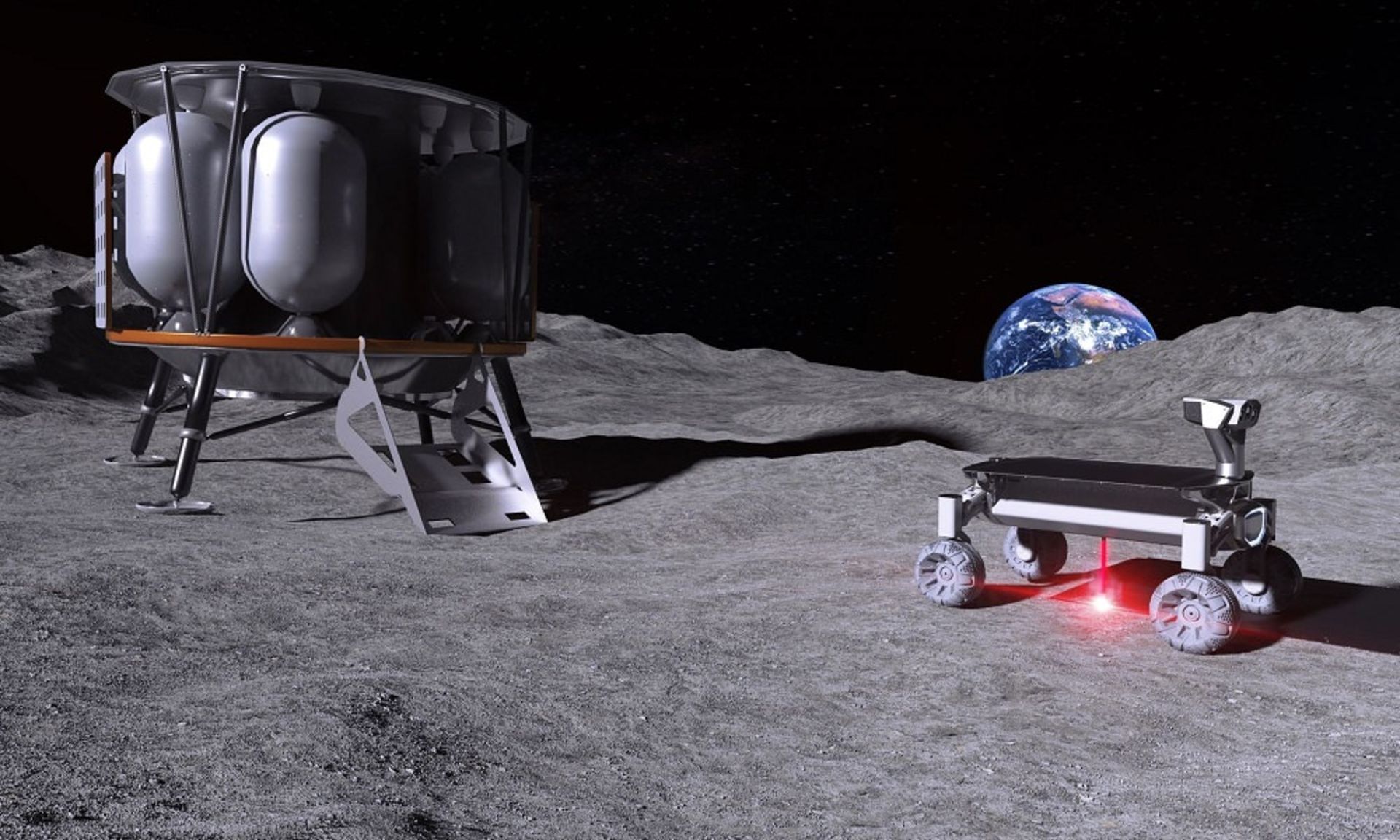
Conceptual design of Moonrise technology on the moon. On the left side is the Alina lunar module, and on the right side, the lunar rover equipped with Moonrise technology melts the lunar soil with the help of a laser.
If we can make long-term stays on the moon possible, or even build a permanent base there, landing spacecraft on the lunar surface will be much easier. By constructing the landing sites, a flat, safe, and free surface of unknown debris can be created for the landing of surface occupants. For example, researchers are currently conducting research at NASA’s Kennedy Space Center to investigate the feasibility of using microwaves to melt the lunar soil (regolith) and turn it into a hard foundation so that it can be used as a landing and launch site. The European Space Agency is also investigating how to use 3D printing to create landing sites and other infrastructure on the moon.
Read more: Europa Clipper, NASA’s flagship probe was launched
Other ideas include the use of lidar remote sensing systems, which are similar to radar systems; But instead of radio waves, it uses lasers to land the spacecraft. Lidar technology provides more accurate readings and uses a network of GPS satellites to help guide the spacecraft during landing.
The problem of public support
As important as technology is, public interest and support are essential to the success of the lunar landing program. “Apollo had enormous resources that are perhaps only comparable today to China’s space program,” says Riley. “Remember that Apollo carried the best computer imaginable, the human brain.” It goes without saying that there is an element of luck involved in every landing.
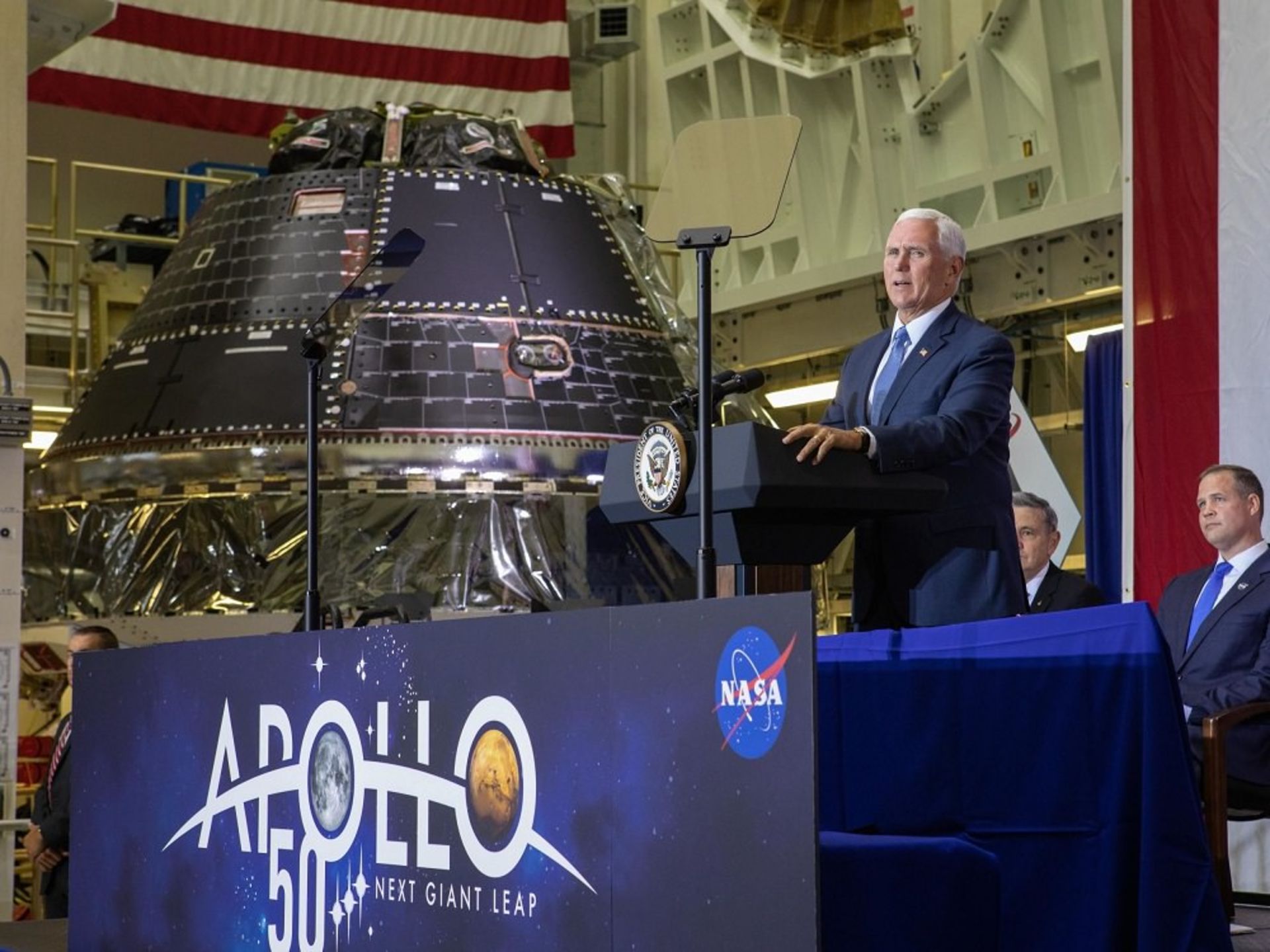
US Vice President Mike Pence speaking at the 50th anniversary of the Apollo 11 mission
Finally, there is the question of what kind of failure is acceptable for people. David says:
I think we have to be serious about the fact that we’re probably going to lose people. There is a serious possibility that the manned lunar lander will crash and kill the astronauts inside. The American people continued to support NASA despite the failures and bad luck of the Apollo program, But at that time there was a lot of pressure to compete with the Soviet Union. Without the bipolar atmosphere of the Cold War and the space race, would people still support missions with human lives in between?


What is the difference between CPU and GPU?


Maybe the Earth is not doomed by the death of the sun


A look at the structure of the eye and the mechanism of vision


MSI Prestige 16 AI review; A laptop that does not run out of charge


Migraine: symptoms, prevention and treatment


The new version of Copilot was unveiled; Microsoft artificial intelligence


How to solve the problem of slow charging of the Android phone?


Why does Everest get higher every year?


The wonderful world of ultrasound


Everything about Cybercube and Robo Van; Elon Musk’s robotic taxis
Popular
-



 Technology1 year ago
Technology1 year agoWho has checked our Whatsapp profile viewed my Whatsapp August 2023
-



 Technology1 year ago
Technology1 year agoSecond WhatsApp , how to install and download dual WhatsApp August 2023
-



 AI2 years ago
AI2 years agoUber replaces human drivers with robots
-



 Technology1 year ago
Technology1 year agoHow to use ChatGPT on Android and iOS
-



 Technology1 year ago
Technology1 year agoThe best Android tablets 2023, buying guide
-



 Technology1 year ago
Technology1 year agoThe best photography cameras 2023, buying guide and price
-



 Humans2 years ago
Humans2 years agoCell Rover analyzes the inside of cells without destroying them
-



 Technology1 year ago
Technology1 year agoHow to prevent automatic download of applications on Samsung phones
